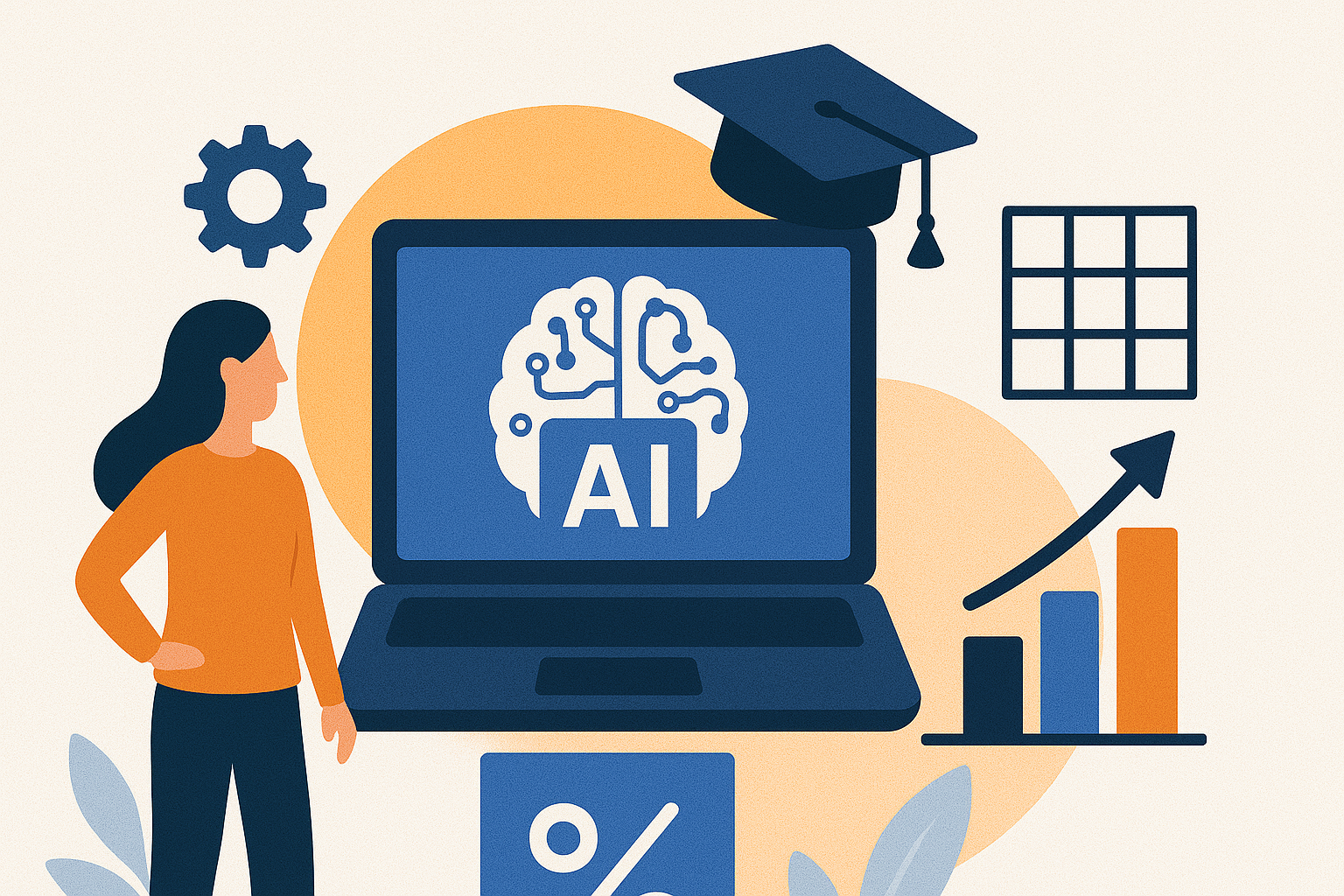About the Blog
The AI conversation in higher ed is often dominated by doomscrolling headlines and nervous side-eyes about job security. But here’s the reality: Artificial intelligence isn’t a threat—it’s a tool. One with the power to reclaim time, reduce burnout, and help higher ed professionals focus on the work that matters. In this post, we reframe the AI narrative through an empathetic, solutions-focused lens. Let’s talk less about what AI might take away—and more about what it can give back.
Brain Breaks & Breakthroughs
(Key takeaways that give you mental breathing room and actionable insights)
- AI can take the busywork off your plate
From drafting emails to updating spreadsheets, AI can automate repetitive tasks that eat up your day. - Using AI isn’t lazy—it’s smart
Automating the right things frees up more time for strategic thinking, creative work, and human connection. - Small steps lead to big shifts
You don’t need to overhaul your workflow overnight. Start with one task and build from there.
Reframing the AI Narrative: It’s About Time
If the phrase "AI in higher education" makes your shoulders tense up, you’re not alone. The story we’ve been sold is that AI is coming for our jobs, our relevance, and maybe even our ability to connect with students. But what if we’re asking the wrong question? Instead of wondering, "How do we compete with AI?" we should be asking, "How can AI help us do our jobs better—and reclaim our time?"
For higher ed professionals juggling a hundred tabs—literally and figuratively—AI can be a powerful way to automate the soul-draining stuff: writing the same email ten different times, manually sorting data, creating reports that no one reads. It’s not about replacing the human touch; it’s about protecting it. When you let AI handle the copy/paste grind, you get more space for creativity, strategy, and connection. And isn’t that what drew most of us to this field in the first place?
What Tasks Should You Hand Off to AI?
Here’s a quick exercise: Think about your week. What tasks make you feel most depleted, but require the least amount of your brainpower? That’s your AI sweet spot.
We’re talking about things like auto-generating meeting notes, scheduling emails based on behavior, building content outlines, organizing data in your CRM, or formatting newsletters across platforms. These tasks have to be done, but they don’t have to be done by you. The goal isn’t to work less—it’s to work smarter. Let AI take care of the mechanical work so you can spend more time ideating campaigns, nurturing relationships, or advocating for student success.
The best part? Many of these solutions are accessible right now. You don’t need to buy a massive new system or wait for leadership to sign off on a five-figure pilot. Tools like ChatGPT, Grammarly, Notion AI, or Zapier integrations can be introduced today—on your terms, at your pace.
How to Start Small and See Big Gains
Let’s be real: wholesale change rarely works, especially in higher ed. So instead of launching a full-scale AI initiative, start by reclaiming one hour this week with a simple shift.
Maybe it’s using AI to draft your weekly newsletter outline, summarize a whitepaper, or generate social captions based on an admissions blog post. Choose one repetitive task, test an AI tool, and compare the result. Did it save time? Did it reduce friction? If yes, great—keep going. If not, tweak or try something else. The beauty of this moment is that you’re not behind—you’re just getting started. And the playing field is still wide open.
The goal isn’t perfection—it’s progress. Think of AI as a lab partner, not a boss. You’re the strategist, the creative, the empathetic human in the room. AI is just there to speed up the grunt work and help you focus on the things that move the needle.
If you're feeling overwhelmed by the AI buzz, remember this: You don’t have to do it all. But you can do something. Start small. Test thoughtfully. Reclaim your time.
Let’s make room for the work that matters. One AI-powered shortcut at a time.










